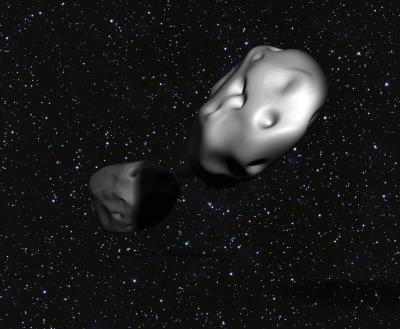 Students in a University of Maryland undergraduate astronomy class made a discovery that wowed professional astronomers: a previously unstudied asteroid is actually a pair of asteroids that orbit and eclipse one another. Fewer than 100 binary eclipsing asteroids have been found in the main asteroid belt.
Students in a University of Maryland undergraduate astronomy class made a discovery that wowed professional astronomers: a previously unstudied asteroid is actually a pair of asteroids that orbit and eclipse one another. Fewer than 100 binary eclipsing asteroids have been found in the main asteroid belt.
Jan 7th, 2014
Read more
An international team of astronomers, using NASA's Fermi observatory, has made the first-ever gamma-ray measurements of a gravitational lens, a kind of natural telescope formed when a rare cosmic alignment allows the gravity of a massive object to bend and amplify light from a more distant source.
Jan 6th, 2014
Read more
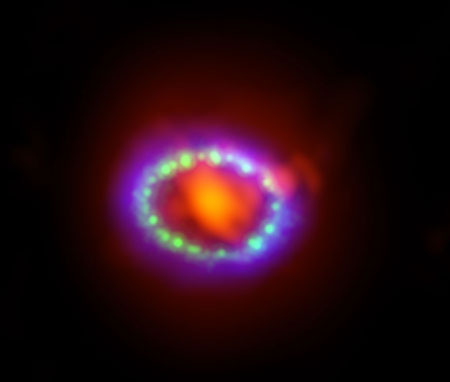 Striking new observations with the Atacama Large Millimeter/submillimeter Array (ALMA) telescope capture, for the first time, the remains of a recent supernova brimming with freshly formed dust. If enough of this dust makes the perilous transition into interstellar space, it could explain how many galaxies acquired their dusty, dusky appearance.
Striking new observations with the Atacama Large Millimeter/submillimeter Array (ALMA) telescope capture, for the first time, the remains of a recent supernova brimming with freshly formed dust. If enough of this dust makes the perilous transition into interstellar space, it could explain how many galaxies acquired their dusty, dusky appearance.
Jan 6th, 2014
Read more
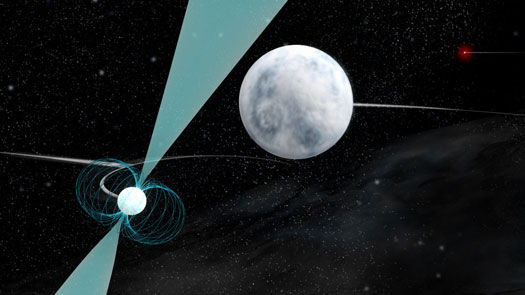 The discovery of a millisecond pulsar in a triple system with two white dwarfs gives astronomers the most precise tool yet for studying the gravitational three-body problem. In addition, the nature of the stars and their interactions may give an unprecedented clue that points toward a new theory of gravity compatible, unlike general relativity, with quantum theory.
The discovery of a millisecond pulsar in a triple system with two white dwarfs gives astronomers the most precise tool yet for studying the gravitational three-body problem. In addition, the nature of the stars and their interactions may give an unprecedented clue that points toward a new theory of gravity compatible, unlike general relativity, with quantum theory.
Jan 6th, 2014
Read more
 Recent studies with the Karl G. Jansky Very Large Array add strong, new evidence to the theory that binary stars form when the disk of gas and dust orbiting one young star gravitationally fragments, forming a second young star.
Recent studies with the Karl G. Jansky Very Large Array add strong, new evidence to the theory that binary stars form when the disk of gas and dust orbiting one young star gravitationally fragments, forming a second young star.
Jan 2nd, 2014
Read more
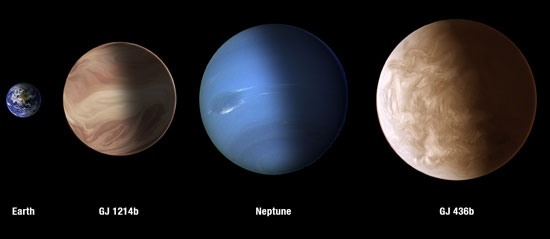 A team of scientists led by researchers in the Department of Astronomy and Astrophysics at the University of Chicago report they have definitively characterized the atmosphere of a super-Earth class planet orbiting another star for the first time.
A team of scientists led by researchers in the Department of Astronomy and Astrophysics at the University of Chicago report they have definitively characterized the atmosphere of a super-Earth class planet orbiting another star for the first time.
Jan 2nd, 2014
Read more
The completion of the 30-day Lunar Laser Communication Demonstration or LLCD mission has revealed that the possibility of expanding broadband capabilities in space using laser communications is as bright as expected.
Dec 23rd, 2013
Read more
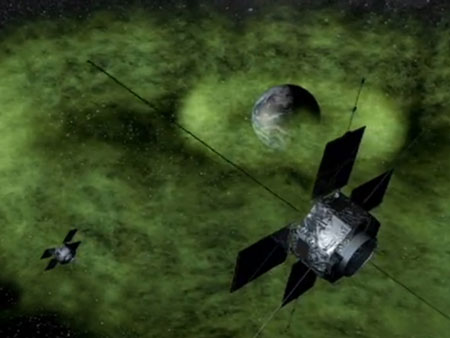 New research using data from NASA's Van Allen Probes mission helps resolve decades of scientific uncertainty over the origin of ultra-relativistic electrons in Earth's near space environment, and is likely to influence our understanding of planetary magnetospheres throughout the universe.
New research using data from NASA's Van Allen Probes mission helps resolve decades of scientific uncertainty over the origin of ultra-relativistic electrons in Earth's near space environment, and is likely to influence our understanding of planetary magnetospheres throughout the universe.
Dec 20th, 2013
Read more
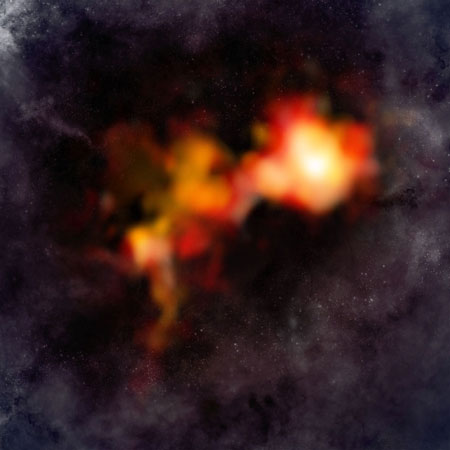 Massive stars present an intriguing mystery: how do they grow so large when the vast majority of stars in the Milky Way are considerably smaller? To find the answer, astronomers used the Atacama Large Millimeter/submillimeter Array (ALMA) telescope to survey the cores of some of the darkest, coldest, and densest clouds in our Galaxy to search for the telltale signs of star formation.
Massive stars present an intriguing mystery: how do they grow so large when the vast majority of stars in the Milky Way are considerably smaller? To find the answer, astronomers used the Atacama Large Millimeter/submillimeter Array (ALMA) telescope to survey the cores of some of the darkest, coldest, and densest clouds in our Galaxy to search for the telltale signs of star formation.
Dec 20th, 2013
Read more
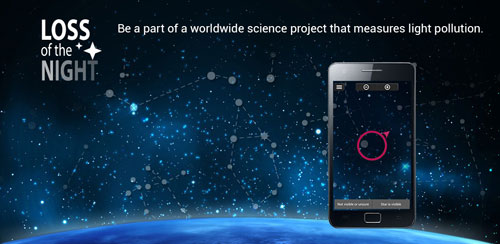 Scientists developed the 'Loss of the Night app' to quantify the illumination of the night sky caused by artificial light. The app, originally available in only German and English, has now been expanded to support 11 languages in order to get data from as many regions as possible.
Scientists developed the 'Loss of the Night app' to quantify the illumination of the night sky caused by artificial light. The app, originally available in only German and English, has now been expanded to support 11 languages in order to get data from as many regions as possible.
Dec 20th, 2013
Read more
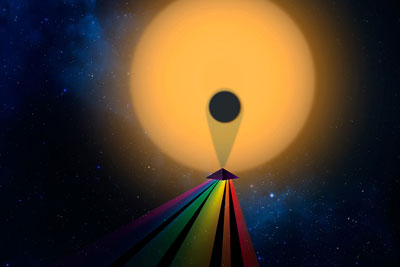 Method will help scientists determine the mass of exoplanets that are not measurable in any other way.
Method will help scientists determine the mass of exoplanets that are not measurable in any other way.
Dec 20th, 2013
Read more
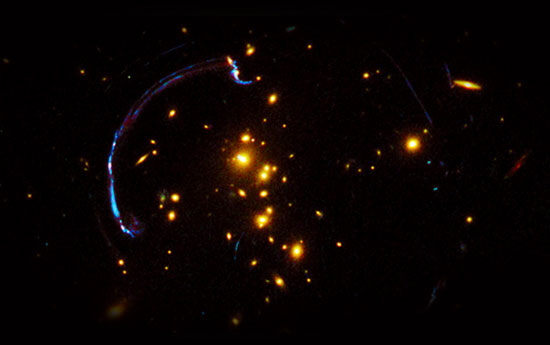 A new paper reviews research on the grain of space-time.
A new paper reviews research on the grain of space-time.
Dec 19th, 2013
Read more
Get to know the Deep Space Network (DSN) - NASA's worldwide radio telescope array that communicates with spacecraft throughout the solar system.
Dec 19th, 2013
Read more
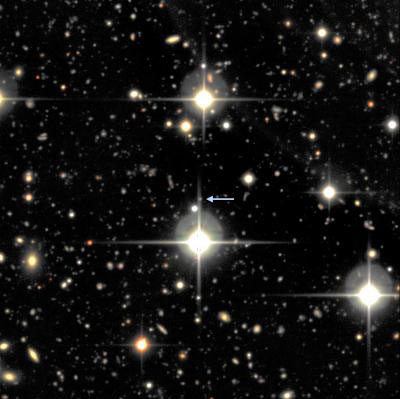 Astronomers affiliated with the Supernova Legacy Survey have discovered two of the brightest and most distant supernovae ever recorded, 10 billion light-years away and a hundred times more luminous than a normal supernova.
Astronomers affiliated with the Supernova Legacy Survey have discovered two of the brightest and most distant supernovae ever recorded, 10 billion light-years away and a hundred times more luminous than a normal supernova.
Dec 18th, 2013
Read more
Europe's billion-star surveyor, Gaia, is due to be launched into space on Thursday 19 December 2013, where it will embark on its mission to create a highly accurate 3D map of our galaxy.
Dec 18th, 2013
Read more
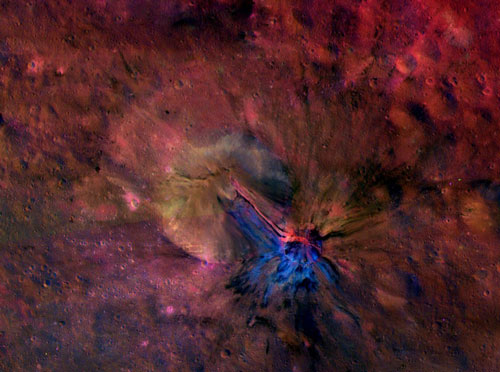 Varied geological formations and a unique landscape: new evaluations show the beauty spots of protoplanet Vesta.
Varied geological formations and a unique landscape: new evaluations show the beauty spots of protoplanet Vesta.
Dec 18th, 2013
Read more
At Arizona State University's Biodesign Institute, Cheryl Nickerson and her team have been investigating the intriguing effects of spaceflight on microbial pathogens.
Dec 17th, 2013
Read more
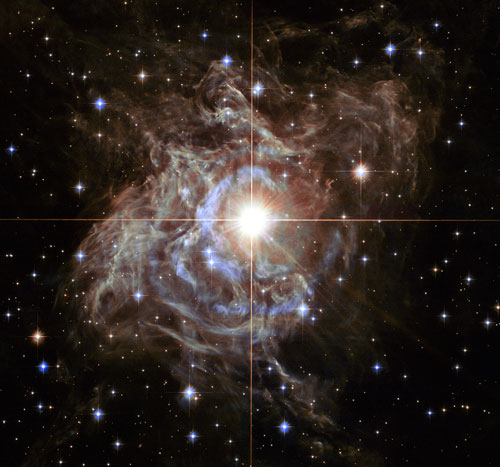 This festive NASA Hubble Space Telescope image resembles a holiday wreath made of sparkling lights. The bright southern hemisphere star RS Puppis, at the center of the image, is swaddled in a gossamer cocoon of reflective dust illuminated by the glittering star. The super star is ten times more massive than our Sun and 200 times larger.
This festive NASA Hubble Space Telescope image resembles a holiday wreath made of sparkling lights. The bright southern hemisphere star RS Puppis, at the center of the image, is swaddled in a gossamer cocoon of reflective dust illuminated by the glittering star. The super star is ten times more massive than our Sun and 200 times larger.
Dec 17th, 2013
Read more
 Students in a University of Maryland undergraduate astronomy class made a discovery that wowed professional astronomers: a previously unstudied asteroid is actually a pair of asteroids that orbit and eclipse one another. Fewer than 100 binary eclipsing asteroids have been found in the main asteroid belt.
Students in a University of Maryland undergraduate astronomy class made a discovery that wowed professional astronomers: a previously unstudied asteroid is actually a pair of asteroids that orbit and eclipse one another. Fewer than 100 binary eclipsing asteroids have been found in the main asteroid belt.
 Subscribe to our Space Exploration News feed
Subscribe to our Space Exploration News feed










